- Home
- John Irving
A Son of the Circus Page 2
A Son of the Circus Read online
Page 2
Achondroplastic dwarfs comprise the majority of circus clowns in India; they are the so-called circus midgets, but they’re not midgets—they’re dwarfs. Achondroplasia is the most common type of short-limbed dwarfism. An achondroplastic dwarf can be born of normal parents, but the dwarf’s children have a 50 percent chance of being dwarfs. This type of dwarfism is most often the result of a rare genetic event, a spontaneous mutation, which then becomes a dominant characteristic in the dwarf’s children. No one has discovered a genetic marker for this characteristic—and none of the best minds in genetics are bothering to search for such a marker.
Quite possibly, only Dr. Farrokh Daruwalla had the far-fetched idea of finding a genetic marker for this type of dwarfism. By the passion of such a wishful discovery, the doctor was driven to gather samples of dwarf blood. The whimsy of his idea was plain: his dwarf-blood project was of no orthopedic interest, and he was an orthopedic surgeon; genetics was only one of his hobbies. Yet, although Farrokh’s visits to Bombay were infrequent and the duration of his stay was always short, no one in India had ever drawn blood from so many dwarfs; no one had bled as many dwarfs as Dr. Daruwalla had bled. In those Indian circuses that passed through Bombay, or in such circuses as frequented the smaller towns in Gujarat and Maharashtra, it was with affection that Farrokh was called “the vampire.”
This is not to suggest that a physician in Dr. Daruwalla’s field in India wouldn’t stumble across a fair number of dwarfs; they suffer from chronic orthopedic problems—aching knees and ankles, not to mention low back pain. Their symptoms are progressive, according to their age and weight; as dwarfs grow older and heavier, their pain gradually radiates into the buttocks, posterior thighs and calves.
At the Hospital for Sick Children in Toronto, Dr. Daruwalla saw very few dwarfs; however, at the Hospital for Crippled Children in Bombay—where, from time to time, upon his return visits, Farrokh enjoyed the title of Honorary Consultant Surgeon—the doctor examined many dwarf patients. But these dwarfs, although they would provide Dr. Daruwalla with their family histories, would not readily give him their blood. It would have been unethical of him to draw the dwarfs’ blood against their will; the majority of orthopedic ailments afflicting achondroplastic dwarfs don’t necessitate testing their blood. Therefore, it was only fair that Farrokh would explain the scientific nature of his research project and that he would ask these dwarfs for their blood. Almost always, the dwarfs said no.
A case in point was Dr. Daruwalla’s closest dwarf acquaintance in Bombay; in the vernacular of friendship, Farrokh and Vinod went back a long way, for the dwarf was the doctor’s most visceral connection to the circus—Vinod was the first dwarf whom Dr. Daruwalla had asked for blood. They had met in the examining room of the doctor’s office at the Hospital for Crippled Children; their conversation coincided with the religious holiday of Diwali, which had brought the Great Blue Nile Circus to Bombay for an engagement at Cross Maidan. A dwarf clown (Vinod) and his normal wife (Deepa) had brought their dwarf son (Shivaji) to the hospital to have the child’s ears examined. Vinod had never imagined that the Hospital for Crippled Children concerned itself with ears—ears weren’t a common area of orthopedic complaint—but the dwarf correctly assumed that all dwarfs were cripples.
Yet the doctor could never persuade Vinod to believe in the genetic reasons for either his or his son’s dwarfism. That Vinod came from normal parents and was nonetheless a dwarf was not in Vinod’s view the result of a mutation. The dwarf believed his mother’s story: that, the morning after she conceived, she looked out the window and the first living thing she saw was a dwarf. That Vinod’s wife, Deepa, was a normal woman—“almost beautiful,” by Vinod’s description—didn’t prevent Vinod’s son, Shivaji, from being a dwarf. However, in Vinod’s view, this was not the result of a dominant gene, but rather the misfortune of Deepa forgetting what Vinod had told her. The morning after Deepa conceived, the first living thing she looked at was Vinod, and that was why Shivaji was also a dwarf. Vinod had told Deepa not to look at him in the morning, but she forgot.
That Deepa was “almost beautiful” (or at least a normal woman), and yet she was married to a dwarf—this was the result of her having no dowry. She’d been sold to the Great Blue Nile Circus by her mother. And since Deepa was still very much a novice trapeze artist, she earned almost no money at all. “Only a dwarf would be marrying her,” Vinod said.
As for their child, Shivaji, recurrent and chronic middle-ear infections are common among achondroplastic dwarfs until the age of 8 or 10; if untreated, such infections often lead to significant hearing loss. Vinod himself was half deaf. But it simply wasn’t possible for Farrokh to educate Vinod on this matter, or on other matters pertaining to the genetics of his and Shivaji’s type of dwarfism; his so-called trident hands, for example—the stubby fingers were characteristically splayed. Dr. Daruwalla also noted the dwarf’s short, broad feet and the flexed position of his elbows, which could never be fully extended; the doctor tried to make Vinod admit that, like his son’s, his fingertips reached only to his hips, his abdomen protruded and—even lying on his back—the dwarf exhibited the typical forward curvature of the spine. This lumbar lordosis and a tilted pelvis explain why all dwarfs waddle.
“Dwarfs are just naturally waddling,” Vinod replied. He was religiously stubborn and utterly unwilling to part with as much as a single Vacutainer of his blood. There he sat on the examining table, shaking his head at Dr. Daruwalla’s theories of dwarfism.
Vinod’s head, like the heads of all achondroplastic dwarfs, was exceedingly large. His face failed to convey a visible intelligence, unless a bulging forehead could be attributed to brain power; the midface, again typical of achondroplasia, was recessed. The cheeks and the bridge of the nose were flattened, although the tip of the nose was fleshy and upturned; the jaw protruded to such a degree that Vinod’s chin was prominent; and while his thrusting head did not communicate the greatest common sense, Vinod’s overall manner proclaimed a personality of great determination. His aggressive appearance was further enhanced by a trait common among achondroplastic dwarfs: because their tubular bones are shortened, their muscle mass is concentrated, creating an impression of considerable strength. In Vinod’s case, a life of tumbling and other acrobatics had given him especially well delineated shoulder muscles; his forearms and his biceps bulged. He was a veteran circus clown, but he looked like a miniature thug. Farrokh was a little afraid of him.
“And just what are you wanting with my blood?” the dwarf clown asked the doctor.
“I’m looking for that secret thing which made you a dwarf,” Dr. Daruwalla replied.
“Being a dwarf is no secret!” Vinod argued.
“I’m looking for something in your blood that, if I find it, will help other people not to give birth to dwarfs,” the doctor explained.
“Why are you wanting to put an end to dwarfs?” the dwarf asked.
“It doesn’t hurt to give blood,” Dr. Daruwalla reasoned. “The needle doesn’t hurt.”
“All needles are hurting,” Vinod said.
“So you’re afraid of needles?” Farrokh asked the dwarf.
“I am just needing my blood right now,” Vinod answered.
The almost-beautiful Deepa wouldn’t permit the doctor to prick her dwarf child with a needle, either, although both Deepa and Vinod suggested that the Great Blue Nile Circus, which was in Bombay for another week, was full of other dwarfs Who might give Dr. Daruwalla their blood. Vinod said he’d be happy to introduce the doctor to the Blue Nile’s clowns. Furthermore, Vinod advised the doctor to bribe the clowns with alcohol and tobacco, and it was at Vinod’s prompting that Farrokh revised his stated reason for wanting the dwarfs’ blood. “Tell them you are using their blood to give strength to a dying dwarf,” Vinod suggested.
This was the way the dwarf-blood project began. It had been 15 years ago when Dr. Daruwalla drove to the circus grounds at Cross Maidan. He brought his needles, his plastic needle holders,
his glass vials (or Vacutainers). To bribe the dwarfs, he brought two cases of Kingfisher lager and two cartons of Marlboro cigarettes; according to Vinod, the latter were popular among his fellow clowns because of the dwarfs’ high regard for the Marlboro Man. As it turned out, Farrokh should have left the beer at home. In the stillness of the early-evening heat, the Great Blue Nile’s clowns drank too many Kingfishers; two dwarfs fainted while the doctor was drawing their blood, which provided further evidence for Vinod that he should retain every drop of his own.
Even poor Deepa guzzled a Kingfisher; shortly before her performance, she complained of a slight dizziness, which was exacerbated when she hung by her knees from the high trapeze. Deepa then tried swinging in a sitting position, but the heat had risen to the top of the tent and the dwarf’s wife felt that her head was trapped in the hottest possible air. She felt only a little better when she gripped the bar in both hands and swung herself with more and more force; hers was the simplest exchange for an aerialist to master, but she still hadn’t learned how to let the catcher grab her wrists before she tried to grab his. Deepa simply would release the bar when her body was parallel to the ground; then she’d throw back her head so that her shoulders dropped below the level of her feet, and the catcher would catch hold of her by her ankles. Ideally, when the catcher caught her, Deepa’s head was approximately 50 feet above the safety net, but the dwarf’s wife was a beginner and she let go of the trapeze before her body was fully extended. The catcher had to lunge for her; he was able to grab only one of her feet, and he caught her at an unfortunate angle. Deepa screamed so loudly when her hip was dislocated that the catcher thought the best thing he could do for her was to drop her into the safety net, which he did. Dr. Daruwalla had never seen a more awkward fall.
A small, dark girl from rural Maharashtra, Deepa might have been 18 but she looked 16 to the doctor; her dwarf son, Shivaji, was not quite two. Her mother had sold her to the Great Blue Nile when Deepa was 11 or 12—at an age when her mother might also have been tempted to sell her to a brothel. Deepa knew she was lucky to have been sold to a circus. She was so thin that the Blue Nile had at first tried to train her as a contortionist—a so-called boneless girl, a plastic lady. But as Deepa grew older, she became too inflexible to be “boneless.” Even Vinod was of the opinion that Deepa was too old when she began her training as a flyer; most trapeze artists learn to fly when they’re children.
The dwarf’s wife was, if not almost beautiful, at least pretty from a certain distance; her forehead was pockmarked and she bore the stigmata of rickets … frontal bossing, rachitic rosary. (It’s called a “rosary” because at every junction of rib and cartilage there’s a marblelike protuberance, like a bead.) Deepa was so small-breasted that her chest was nearly as flat as a boy’s; however, her hips were womanly, and it was partly the way the safety net sagged with her weight that made her appear to be lying facedown in the net while her pelvis was tilted up—toward the empty, swinging trapeze.
From the way she’d fallen and was lying in the safety net, Farrokh felt almost certain that the problem was Deepa’s hip, not her neck or back. But until someone could keep her from flopping around in the net, the doctor didn’t dare go to her. Vinod had instantly crawled into the net. Now Farrokh told him to clamp Deepa’s head between his knees and hold her shoulders with his hands. Only when the dwarf securely held her—only when Deepa couldn’t move her neck or her back, or even rotate her shoulders—did Dr. Daruwalla dare to enter the net.
In the time it had taken Vinod to crawl into the net with her, and all the time that the dwarf held his wife’s head tightly between his knees—while Dr. Daruwalla crawled into the sagging net and made his slow, awkward way toward them—the net never stopped swaying and the empty trapeze that dangled above them moved out of rhythm with the net.
Farrokh had never been in a safety net before. He was a nonathlete who was (even 15 years ago) noticeably plump, arid his climb into the trapeze artists’ net was a monumental struggle, aided only by his gratitude for his first samples of dwarf blood. As Dr. Daruwalla proceeded on all fours across the dipping, swaying net to where poor Deepa lay in her dwarf husband’s clutches, the doctor most resembled a fat, tentative mouse traversing a vast spiderweb.
Farrokh’s unreasonable fear of being pitched out of the net at least distracted him from the murmuring of the circus audience; they were impatient for the rescue process to hurry up. That the loudspeaker had introduced him to the restless crowd did nothing to prepare Dr. Daruwalla for the arduousness of his adventure. “Here is coming the doctor!” the ringmaster had declared over the loudspeaker, in a melodramatic effort to hold the crowd. But what a long time it took the doctor to reach the fallen flyer! Furthermore, Farrokh’s weight caused the net to dip nearer the ground; he was like an ungainly lover approaching his prey in a soft bed that sags in the middle.
Then, suddenly, the net sagged so steeply that Dr. Daruwalla was thrown off balance; clumsily, he fell forward. The plump physician thrust his fingers through the holes in the net; since he’d already removed his sandals before climbing into the net, he tried to insert his toes (like claws) through the holes in the net, too. But in spite of this effort to slow his own momentum, which was now of a pace to at last be of interest to the bored audience, gravity prevailed. Dr. Daruwalla pitched headfirst into the sequined belly of Deepa’s tight singlet.
Deepa’s neck and back were undamaged—the doctor had correctly diagnosed her injury from his view of her fall. Her hip was dislocated; it hurt her when Farrokh fell upon her abdomen. The doctor’s forehead was scratched by the pink and fire-engine-red sequins that formed a star over Deepa’s pelvis, and the bridge of Dr. Daruwalla’s nose ground to a sharp halt against her pubis.
Under vastly different circumstances, their collision might have been sexually thrilling, but not to a woman with a dislocated hip (and with her head clamped tightly between a dwarf’s knees). For Dr. Daruwalla—the fallen flyer’s pain and her screams notwithstanding—this encounter with Deepa’s pubic bone would be recorded as his single extramarital experience. Farrokh would never forget it.
Here he’d been called out of the audience to aid a dwarf’s wife in distress. And then, in full view of the unimpressed crowd, the doctor had ended up with his face jammed into the injured woman’s crotch. Was it any wonder he couldn’t forget her, or the mixed sensations that she’d caused him?
Even today, so many years later, Farrokh felt flushed with embarrassment and titillation, for his memory of the trapeze artist’s taut belly still excited him. Where his cheek had come to rest against her inner thigh, Farrokh could still feel how her tights were soaked with sweat. All the time he heard Deepa screaming in pain (as the doctor clumsily struggled to move his weight off her), he also heard the cartilage in his nose cracking, for Deepa’s pubis was as hard as an ankle or an elbow. And when Dr. Daruwalla breathed in her dangerous aroma, he thought he’d at last identified the smell of sex, which struck him as an earthy commingling of death and flowers.
It was there, in the swaying safety net, that Vinod first accused him. “All this is happening because you are wanting blood from dwarfs,” the dwarf said.
The Doctor Dwells on Lady Duckworth’s Breasts
In 15 years, the Indian customs authorities had detained Dr. Daruwalla only twice; both times, the disposable hypodermic needles—about a hundred of them—had caught their attention. It had been necessary for the doctor to explain the difference between syringes, which are used to give injections, and Vacutainers, which are used to draw blood; in the Vacutainer system, neither the glass vials nor the plastic needle holders are equipped with plungers. The doctor wasn’t carrying syringes, for putting drugs in; he was carrying Vacutainers, for taking blood out.
“Whose blood is being taken out?” the customs man had asked.
Even the answer to that question had been easier to explain than the problem that currently presented itself to the doctor.
The current problem was,
Dr. Daruwalla had upsetting news for the famous actor with the unlikely name of Inspector Dhar. Not sure of the degree to which Dhar would be distressed, the doctor was impelled by cowardice; he planned to give the movie star the bad news in a public place. Inspector Dhar’s poise in public was renowned; Farrokh felt he could rely on the actor to keep his composure. Not everyone in Bombay would have thought of a private club as a public place, but Dr. Daruwalla believed that the choice was both private and public enough for the crisis at hand.
That morning, when Dr. Daruwalla had arrived at the Duckworth Sports Club, he had thought it was unremarkable to see a vulture high in the sky above the golf course; he didn’t consider the bird of death as an omen attached to the unwelcome news he carried. The club was in Mahalaxmi, not far from Malabar Hill; everyone in Bombay knew why vultures were attracted to Malabar Hill. When a corpse was placed in the Towers of Silence, the vultures—from as far as 30 miles outside Bombay—could scent the ripening remains.
Farrokh was familiar with Doongarwadi. The so-called Towers of Silence are seven huge cairns on Malabar Hill where the Parsis lay out the naked cadavers of their dead to be picked clean by the carrion eaters. As a Parsi, Dr. Daruwalla was descended from Persian Zoroastrians who had come to India in the seventh and eighth centuries to escape Muslim persecution. Farrokh’s father, however, was such a virulent, acerbic atheist that the doctor had never been a practicing Zoroastrian. And Farrokh’s conversion to Christianity would doubtless have killed his godless father, except that his father was already dead. The doctor didn’t convert until he was almost 40.
Because Dr. Daruwalla was a Christian, his own mortal body would never be exposed in the Towers of Silence; but despite his father’s inflammatory atheism, Farrokh respected the habits of his fellow Parsis and practicing Zoroastrians—and he expected to see vultures flying to and from Ridge Road. Nor was the doctor surprised that the particular vulture above the Duckworth golf course appeared in no hurry to arrive at the Towers of Silence; the area was entangled with vines, and not even other Parsis, unless they were dead, were welcome at the burial wells.

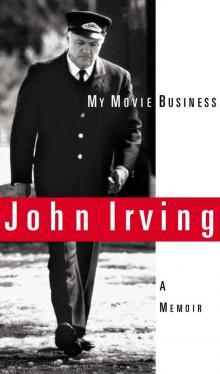 My Movie Business: A Memoir
My Movie Business: A Memoir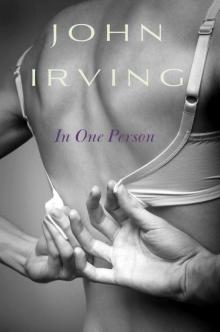 In One Person
In One Person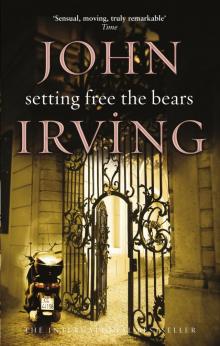 Setting Free the Bears
Setting Free the Bears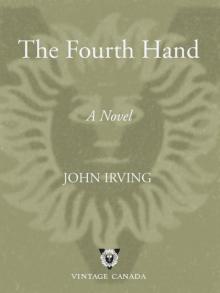 The Fourth Hand
The Fourth Hand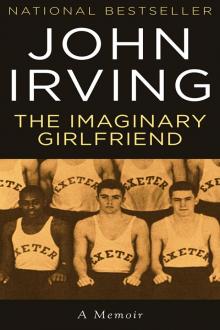 The Imaginary Girlfriend
The Imaginary Girlfriend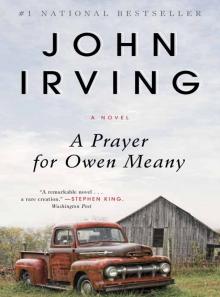 A Prayer for Owen Meany
A Prayer for Owen Meany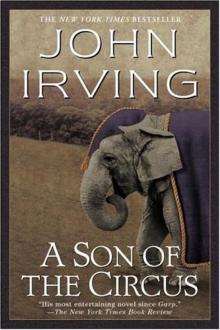 A Son of the Circus
A Son of the Circus Last Night in Twisted River
Last Night in Twisted River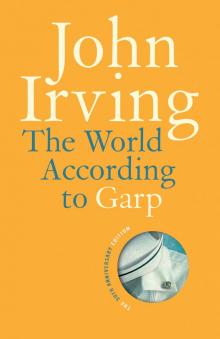 The World According to Garp
The World According to Garp The Cider House Rules
The Cider House Rules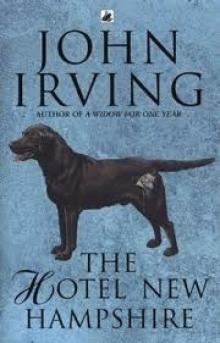 The Hotel New Hampshire
The Hotel New Hampshire The 158-Pound Marriage
The 158-Pound Marriage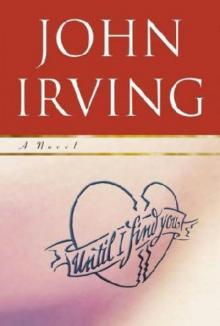 Until I Find You
Until I Find You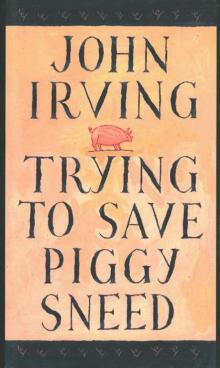 Trying to Save Piggy Sneed
Trying to Save Piggy Sneed Cider House Rules
Cider House Rules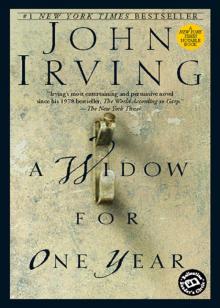 A Widow for One Year
A Widow for One Year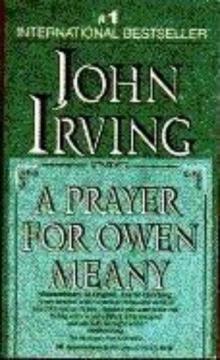 A prayer for Owen Meany: a novel
A prayer for Owen Meany: a novel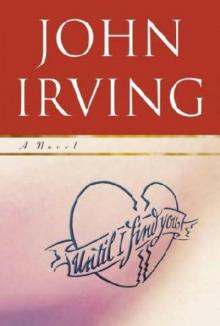 (2005) Until I Find You
(2005) Until I Find You